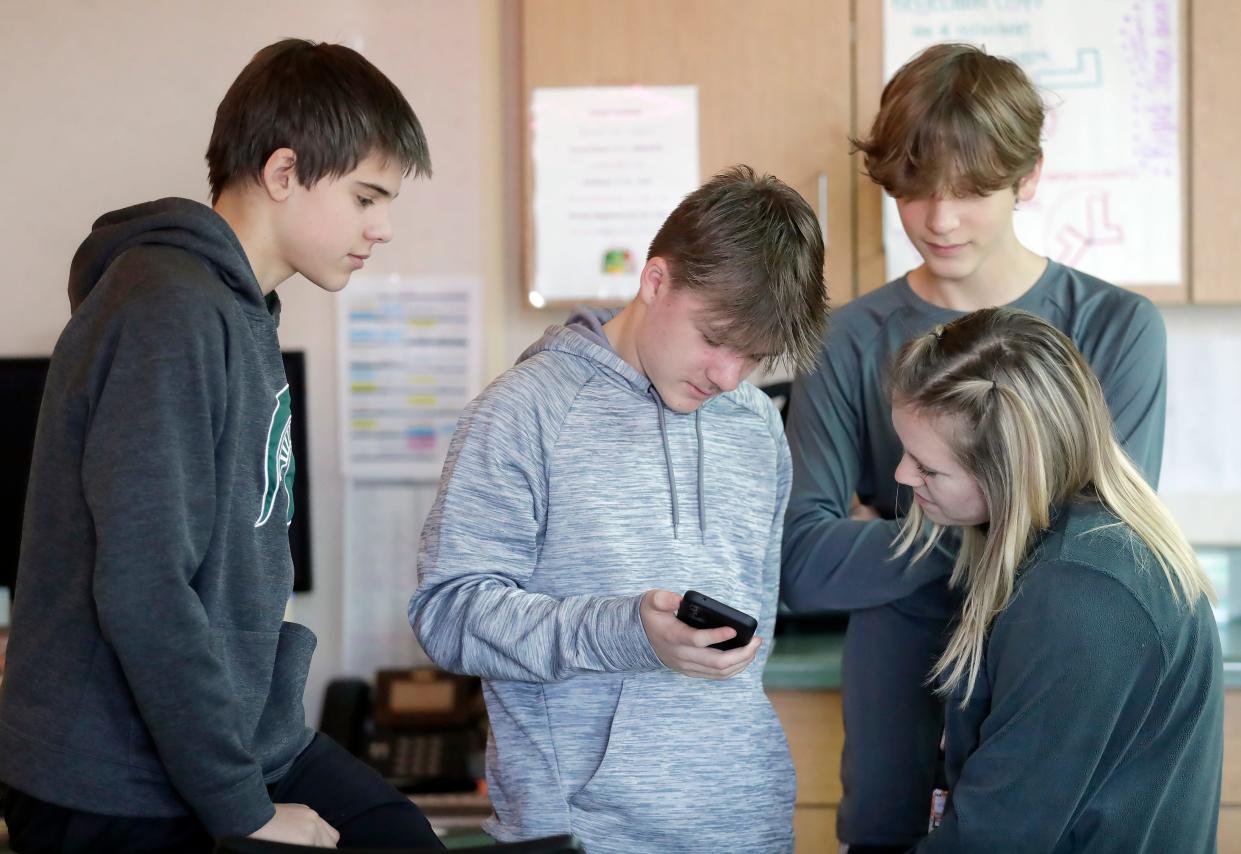See how some area school districts teach about digital citizenship

Megan Moreno, a UW adolescent health physician and co-director of the Center of Excellence on Social Media and Youth Mental Health, compares teaching kids about responsible digital technology use to teaching them to drive, since the best instruction of both will involve a gradual increase in responsibility and privileges.
That metaphor has been taken to heart in the Hortonville District where a digital driver's license program allows middle school students to use electronic devices only after passing a digital citizenship assessment.
District superintendent Todd Timm said the assessment makes sure students know how to protect themselves and their identity online, and "treat others with respect and kindness, just like we hope they do ... in-person."
Hortonville middle school students also take mandatory digital literacy courses to ensure they understand district expectations, such as using devices at school only for learning purposes and accessing only school-appropriate content. Once they obtain 100% proficiency on the assessment, they earn the right to BYOD (bring your own device) privileges, according to the district's 2023-24 handbook for both the district's middle schools, Greenville and Hortonville.
As schools around Wisconsin continue adjusting to the digital and social media age, some have come up with techniques to teach students about digital literacy.
It's a delicate balance. Though Timm said it's important for kids to learn how to use devices safely — and then practice doing so — the district has also had to enact strict policies.
Students who've earned "Bring Your Own Device" privileges can use their personal smartphones and tablets only when teachers allow it for educational purposes. Otherwise, devices must remain in their lockers, and are not allowed during lunch, outside at recess, in bathrooms or locker rooms. Students can't take pictures or videos of other students on school grounds or buses, unless it's for school use and a teacher has granted permission. The district also prohibits students from using their own data plans on their phones. Instead, they must use the district's accounts, which filter internet use.
And the district is piloting a program banning cellphones during the day in the eighth grade at Hortonville Middle School after teachers noticed the phones caused a distraction during class time, Timm said.
He said that, at the high school level, some teachers have "pocket boards" for students to place their phones in during instructional time. The high school piloted that program last year.
Advisory period to discuss topics such as digital citizenship
At Kettle Moraine High School in Wales, in Waukesha County, teachers host about 17 students for about 40 minutes for an advisory period each Monday and Friday. They will advise those same students through all four years of their high school careers.
"The idea is that each student has one adult in the building that they should feel comfortable going to with any academic, life, or other problems that they are working through," Kettle Moraine High School principal Justin Bestor said in an email to a reporter.
During the advisory period, teachers check grades and academic progress and cover lessons that don't fit within the school's larger curriculum. The lessons include topics such as college and career planning, state-required testing and prep, digital citizenship and course selection for the following school year, Bestor said. These activities help teachers build relationships with students.
While each grade level covers different topics — juniors will cover ACT test preparation and seniors scholarship applications, for example — digital citizenship is covered in every grade level, Bestor said. Those lessons include discussions on how to appropriately use technology and social media, he added.
One example of a lesson is about "not so nice" social media posts a celebrity or athlete made when they were younger, Bestor said.
"So we use that as an example of what you're doing right now can have a direct impact on (you) 10, 15 years from now," Bestor said. "Because this stuff never goes away. Someone can refind it, dig it out and use it for or against you."
The CASEL approach
In the Wauwatosa School District, the district focuses on the Collaborative for Academic, Social and Emotional Learning's social emotional learning skills, including self-awareness, self-management, responsible decision-making, relationship skills and social awareness, according to an email from the district's communications coordinator, Sarah Ellis.
CASEL is a nonprofit that "has been leading a growing movement to make social emotional learning an integral part of education."
The approach for students in senior kindergarten through fifth grade uses Second Step, a digital social emotional learning curriculum developed by the nonprofit organization Committee for Children. Second Step focuses on teaching CASEL skills through growth mindset and goal setting, emotion management, empathy and kindness and problem solving. Students in grades six through eight use "Character Strong," which focuses on the CASEL domains through skills related to engagement, belonging and well-being.
"While not specific to digital platforms, these skills are the building blocks equipping students to navigate their social relationships and engage in responsible decision-making," Ellis said in her email.
Madison Lammert contributed to this report.
Contact Alec Johnson at (262) 875-9469 or alec.johnson@jrn.com. Follow him on Twitter at @AlecJohnson12.
This article originally appeared on Milwaukee Journal Sentinel: See how some area school districts teach about digital citizenship

